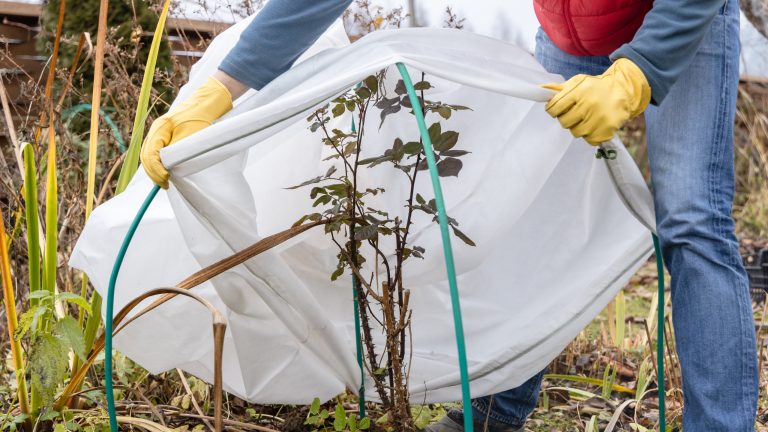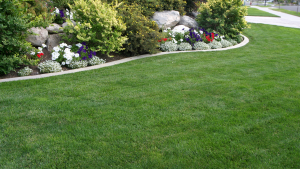As winter approaches, the temperature drops, and our gardens face the challenges of colder weather. While some plants can endure harsh winter conditions, others, susceptible plants, require extra care to thrive. This piece will examine the most effective ways to protect your delicate green companions during mild winter. If you’re searching for a dedicated team for your landscaping Baton Rouge Louisiana is the answer.
What is the best protection for sensitive plants during a mild winter? Let’s explore some effective methods to safeguard your plants:
Mulching
Start by adding a thick layer of mulch around the base of your sensitive plants. This helps insulate the soil, keeping it warm and steady.
Row Covers
Using row covers or blankets, shield your plants from chilly winds and frost. These act as protective layers, providing an extra barrier against the cold.
Wrap with Burlap
Create a protective barrier against cold winds by wrapping your sensitive plants. This method allows air circulation while preventing harsh winter conditions from affecting your plants.
Anti-Desiccant Sprays
To minimize moisture loss through the leaves, consider applying anti-desiccant sprays. This helps your plants retain the necessary moisture during the winter months.
Cold Frames
Provide an extra layer of protection by using structures like cold frames. These create a small, controlled environment that serves as a microclimate for your sensitive plants, shielding them from harsh winter conditions.
15 Tips to Keep Your Sensitive Plants During Mild Winter
1. Watering Schedule: Before the cold weather sets in, give your plants a deep drink of water. This helps them stay hydrated and prevents them from drying out when the frost arrives.
2. Choose Wind-Resistant Locations: When planting sensitive plants, pick spots in your garden that are shielded from strong winds. This provides a natural barrier and protects your plants from the harsh effects of the wind.
3. Potted Plants Indoors: For plants in pots, bring them inside your home or place them in a greenhouse when the nights turn freezing. This keeps them warm and shielded from the cold temperatures.
4. Use Heat Lamps: Use heat lamps or even Christmas lights to enhance your plants’ warmth. These additional heat sources create a cozy environment for your sensitive plants.
5. Avoid Fertilizing: Stop giving your plants fertilizer as fall transitions into winter. This prevents new growth that might be vulnerable to damage from frost.
6. Pruning: Before winter arrives, take the time to trim away any dead or damaged branches. This tidies up your plants and reduces the risk of diseases taking hold during the colder months.
7. Hydrate Before Freeze: Provide your plants with a thorough watering a day or two before you expect freezing temperatures. This extra hydration acts as a protective layer against the impending freeze.
8. Create Windbreaks: Build temporary windbreaks around your plants using burlap or wooden boards. This shields them from the biting effects of strong winds, offering a buffer against the elements.
9. Group Plants: Cluster your sensitive plants together. This grouping creates a microclimate where they share warmth, providing mutual protection during colder weather.
10. Monitor Soil Moisture: Keep an eye on the moisture levels in the soil. Regularly check and adjust your watering routine according to the unique requirements of your plants and the prevailing weather conditions.
11. Protect Roots with Mulch: Apply a generous layer of mulch around the base of your plants. This acts as insulation for the roots, safeguarding them from the cold temperatures.
12. Invest in Plant Covers: Purchase specially designed plant covers. These covers act as shields, protecting delicate vegetation from frost and the chilling effects of cold winds.
13. Erect A-Frame Shelters: Build A-frame shelters using stakes and fabric. These shelters provide a physical barrier against the elements, ensuring your plants are well-protected.
14. Use Garden Fabrics: Cover your plants with breathable garden fabrics. These fabrics provide insulation without trapping excess moisture, creating a comfortable environment for your plants.
15. Apply Organic Insulation: Surround the base of your plants with organic materials like straw or shredded leaves. This natural insulation adds an extra layer of protection, helping your plants stay warm and healthy during winter.
Conclusion
Keeping your delicate plants safe during a not-so-cold winter involves doing a few bright things. Using mulch and covers, planting correctly, and giving extra warmth can help protect your plants. These ideas will make sure your plants stay healthy through winter and are all set to grow beautifully in the spring. Taking care of your garden this way means you can enjoy it looking great all year long.





